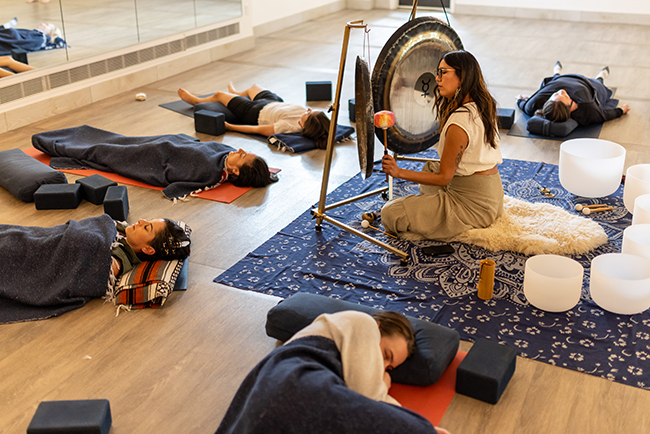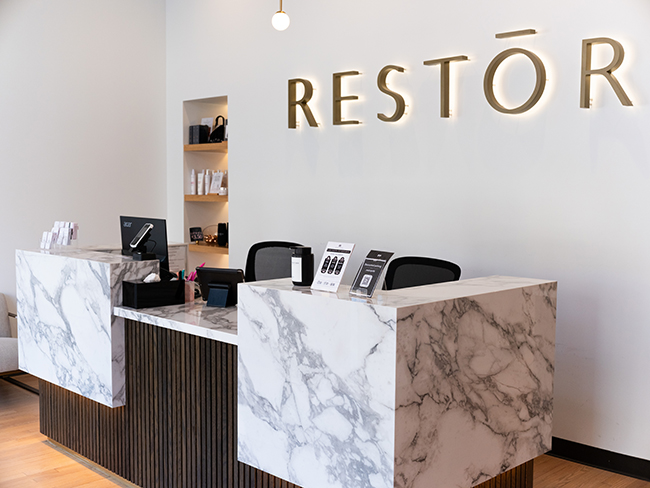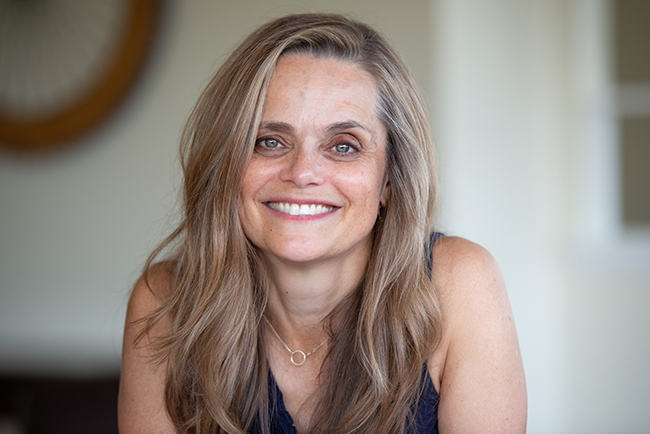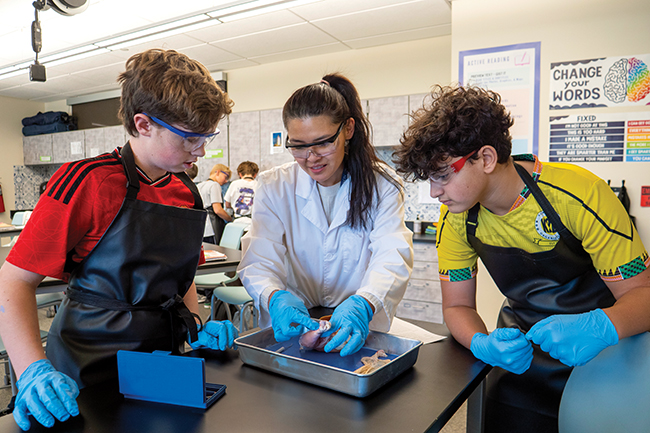Bad Medicine- Opioid Addiction in Boulder County
01 Dec 2016
The United States is grappling with an opioid addiction epidemic, and Boulder County is no exception
By Haley Gray Colt Smith has bad knees. “Degenerative growth disorder,” the 33-year-old Longmont resident says. At age 12, Smith had a huge growth spurt—9 inches in one year. That’s when the patellofemoral pain syndrome kicked in. A small fold in the cushioning membrane under Smith’s kneecap was causing tremendous discomfort every time he bent a knee. He got his first surgery at 14, on his left knee. In 11th grade, Smith went under the knife again to remove the fold in his right leg. “I felt very relieved, because it took a long time to diagnose [the problem],” Smith says. “It was like, I’m not going to have to deal with this kind of pain every day.” He needed a third procedure his senior year, again on his right knee, after being injured in a judo accident. Smith was a pretty average teenager—a little angsty, but not terribly so. He wasn’t lost, hopeless, or depressed. He had friends, hobbies and a loving family. He loved judo and was the commander of his high school’s silent drill team. With a big dream of serving in the Marine Corps, he enrolled in a south Texas military boarding school for high school. He wanted to be “the most trained-up kid going into the Marines.” After his first surgery, Smith was prescribed hydrocodone—a medication he now calls a “diet opiate.” “Opiates do something really amazing for me,” Smith says. “Fears, anxieties or racing thoughts, or uncomfortable thoughts or feelings that are difficult to manage—they don’t exist when I’m high.” After each procedure, Smith would tell his doctors he needed more—and stronger—pills to manage his postsurgical pain. He would see two doctors and tell both the other wasn’t prescribing him anything. He would even go to the emergency room and complain of pain, knowing he’d walk out with a pill bottle in hand. When he became old enough to drive, he used his weekends to cross the border for easy access to over-the-counter opioids from Mexican pharmacies. “It’s really, really easy to get a prescription for opioids,” says Smith. From his first surgery on, he was almost always high.Prescription Nation
“Opioid” refers to a type of drug either derived from opium, like morphine or heroin, or a synthetic or semisynthetic drug made in the molecular image of opium, like fentanyl or hydrocodone. They all do more or less the same thing—attach to opioid protein receptors found mainly in the brain and spine. They effectively dull, but never entirely eliminate, the perception of pain. On the classic 1-to-10 pain scale doctors use to rate physical pain, opioids are capable of reducing perceived pain by about three points. For some, like Smith, opioids also produce euphoric effects. For all, prolonged exposure to opioids results in dependence that can culminate in addiction.Of the roughly 6 percent of Coloradans who report nonmedical use of prescription opioids, the vast majority say they got their first pill from the medicine cabinet of a friend or family member.Colorado is ranked above the national average for self-reported misuse of prescription opioids. About 6 percent of the state’s population older than 12 say they’ve misused opioids, according to the National Survey on Drug Use and Health. Nationally, only 4.4 percent of adults report the same. Colorado’s high rate is largely due to the state’s high rate of youth abuse—14 percent. For about 40 Coloradans each month, opioid misuse becomes fatal, according to the Colorado Consortium for Prescription Drug Abuse Prevention, a task force created by Governor Hickenlooper to address Colorado’s growing opioid crisis. On average, about one of the monthly deaths takes place in Boulder County. It might seem like a small number, but according to the Consortium, overdose deaths are the tip of the iceberg when assessing a community’s drug problem. For every one fatal opioid overdose, there are about 32 emergency-room visits related to abuse or dependence, and 825 individuals who admit use of opioids. And abuse rates are growing. The percentage of Coloradans seeking treatment for substance abuse nearly doubled for prescription opioid abuse between 2007 and 2014—from 3.6 percent to 6.4 percent. The percentage of those seeking treatment for heroin use climbed from below 5 percent in 2007 to nearly 13 percent in 2014, according to the Colorado Department of Human Services Office of Behavioral Health.

(photo by Haley Gray)
The Wrong Kind of Leftovers
In Colorado, 279,314 opioid prescriptions were filled in September 2016, a decrease of almost 100,000 from 2015. Still, Consortium Coordinator Robert Valuck argues that’s far too many. He believes there are appropriate uses for opioid pain medications, but patients should be empowered with more information and given the opportunity to decline. He also thinks doctors should call for fewer tablets per prescription. “Don’t give somebody 60 when they only need 10,” he says. “For dental prescriptions [after a tooth extraction, for example], don’t give them 30. Give them six.”The number of people seeking treatment for opioid addiction is expanding beyond typical demographics, and the crisis is impacting all racial, age and socioeconomic demographics. That makes it an epidemic.Leftover pills of legitimate prescriptions have been identified as a major catalyst behind growing nonmedical use and addiction rates. Of the roughly 6 percent of Coloradans who report nonmedical use of prescription opioids, the vast majority say they got their first pill from the medicine cabinet of a friend or family member, according to the Consortium. There is actually some heartening news on that point. Nationally, prescription opioid use has been declining since 2012, from 12.5 percent among non-institutionalized persons over 12 years of age to about 10 percent, according to the National Survey on Drug Use and Health. But the Center for Behavioral Health Statistics and Quality reports the use of heroin has spiked in the United States in the same timeframe, from 0.6 percent to 0.9 percent. In a nation of nearly 320 million, that’s a lot of people. Boulder County seems to mirror that trend. In 2011, seven people in Boulder County died of a heroin-related overdose. That number more than doubled to 15 overdose deaths in 2013, and in 2015, the most recent figures at press time, 11 people died of heroin overdose. These overdose rates, obtained from the Boulder County Coroner’s Office, might belie a greater problem. Since 2013, there have been 15 known saves by naloxone, an opioid overdose reversal drug.
The Pain of Staying the Same
Smith graduated from high school on a blistering hot day in south Texas. Clad in dress blues, he performed with the silent drill team at the ceremony, tossing around an 11-pound rifle with an attached bayonet. He was high. He’d been secretly taking prescription opioid medications almost constantly for about four years. Smith had done OK in school, but his third knee surgery disqualified him from joining the Marine Corps. That was a significant blow. He filled his free time in his final year of high school playing bass guitar, and got really good at it. He became so skillful that B and B Productions, a music production company, picked him up as musician-for-hire. They sent him on the road to play alongside bands like Electric Ocean, a hair metal band, and grunge band The Sway.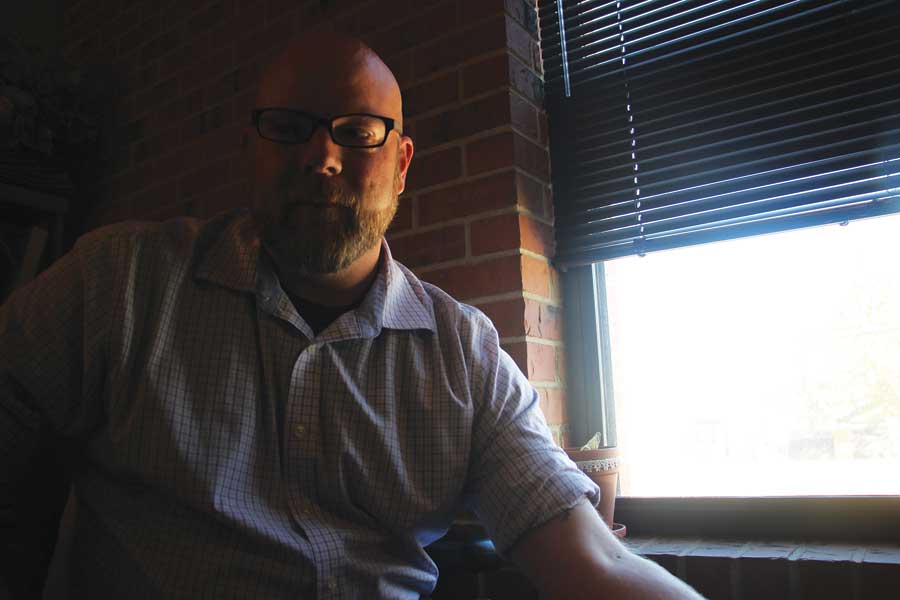
Angels Among Us
In Boulder County, someone who needs treatment to get clean but can’t pay for it can ask Mental Health Partners for a bed in its detox facility. There are 20 beds, and the process is nonmedical. There is no suboxone or methadone to ease the crushing withdrawal symptoms. Patients are monitored to ensure their safety, and might be given drugs to ease symptoms like aches and nausea. They receive an assessment of counseling needs, and referrals for things like medical care and housing resources. Even with this help, the process is excruciating. After detox, Mental Health Partners offers a transitional residential treatment program that runs for four to six weeks. The program has six beds, about a quarter as many as the detox facility. “It’s always full, and there’s always a wait list of anywhere from a few weeks to several months,” Noonan says. “There are people who are wanting treatment after detox, and there’s no space for them.” Most addicts leaving detox are forced to jump to another outpatient service. But Medicaid does not pay for residential substance-abuse treatment facilities, so unless the addict (or their family) has about $30,000 to pay for a treatment program, they’re on their own trying to stay clean until a bed frees up. Longmont Chief of Public Safety Mike Butler, a career firefighter and police officer who has lived in Longmont for the past 38 years, wants to change that. He boldly launched a program in November that grants amnesty to anyone who turns in their paraphernalia and/or drugs to Longmont police and asks for treatment.“Opioid” refers to a type of drug either derived from opium, like morphine or heroin, or a synthetic or semisynthetic drug made in the molecular image of opium, like fentanyl or hydrocodone.The Angel Initiative then matches the addict with a recovery center—whether or not he or she can pay. “It’s a promise that may seem big,” he says, “but others have kept it.” Butler says about 10 local for-profit addiction-treatment service providers have committed to donating scholarships for his program. The Angel Initiative is a program that was first created in Gloucester, Mass., a middle-class New England town hit hard by the opioid crisis. In April 2015, its chief of police, Leonard Campanello, posted a message on the department’s Facebook page to announce the program. The New York Times reported earlier this year that all 391 addicts that came forward, most from beyond Gloucester, were placed in treatment. For most struggling with heroin addiction, that’s a small but significant step among many toward recovery. A 2012 Johns Hopkins study found 78 percent of recovering heroin users relapse. For Smith, a 30-day stint in residential treatment kept him clean for about 11 months. That’s how long it took for relationship troubles to unhinge his emotional stability and send him back to pills. His relapse lasted nearly eight weeks, until he could get himself into an indigent-care facility in Lubbock, Texas. Eight years later, Smith is leading a relatively normal life. He still plays bass and loves jam bands. For work, he counsels at-risk youth at iThrive, a Longmont nonprofit that specializes in early intervention for teens who might be forming habits that could turn deadly. He came to Colorado two years ago to work in substance-abuse counseling. He says he loves working with teenagers, in part because they remind him how easily everything he’s built over the last decade or so could slip away. He still calls himself an addict. “It’s something I’ll be living with for the rest of my life,” he says. “But things are much better now.”




